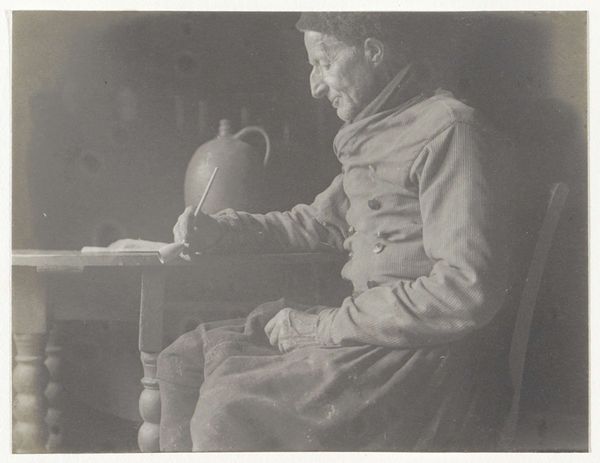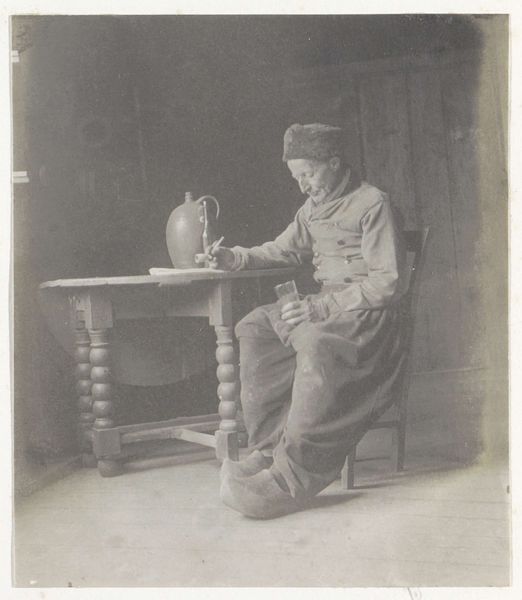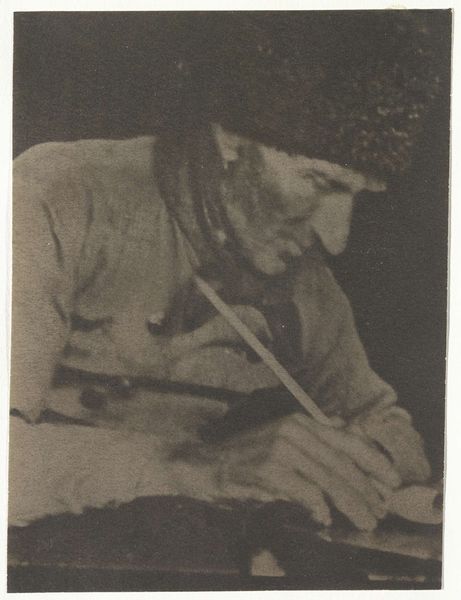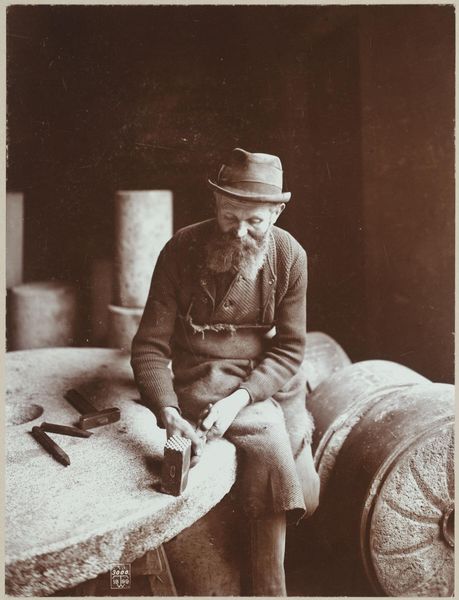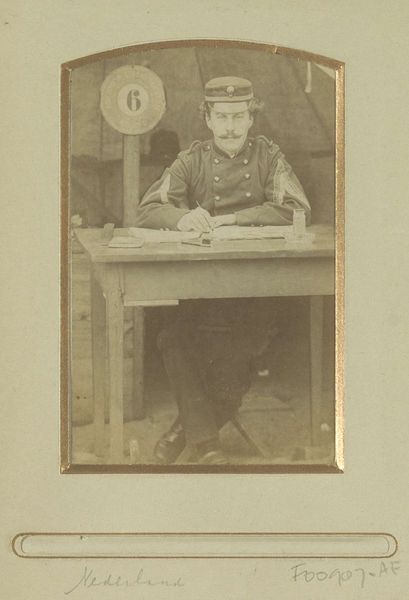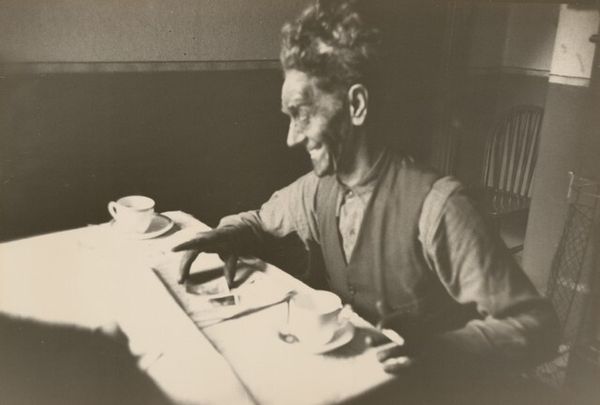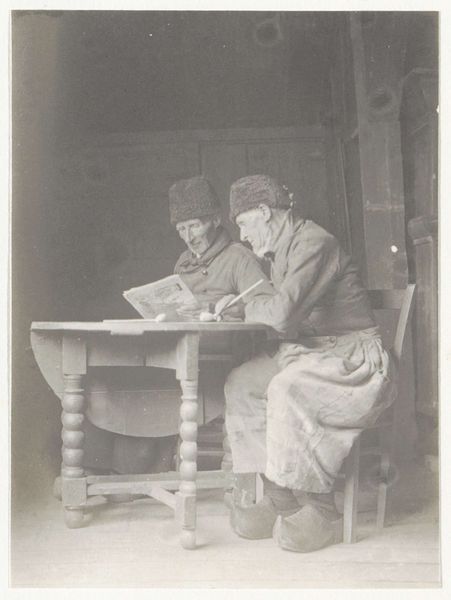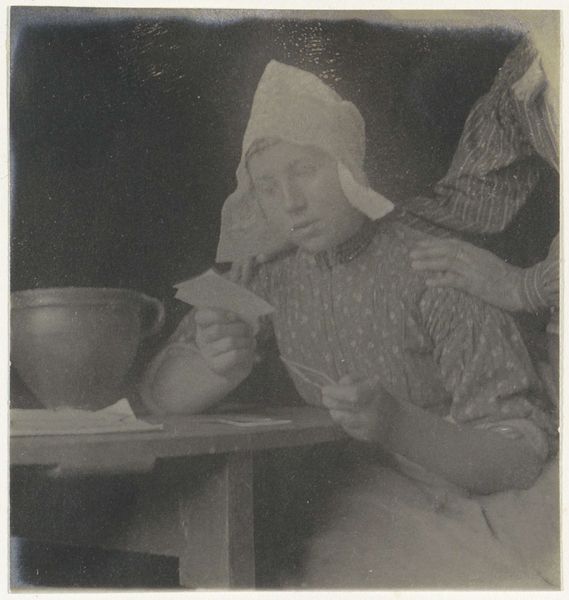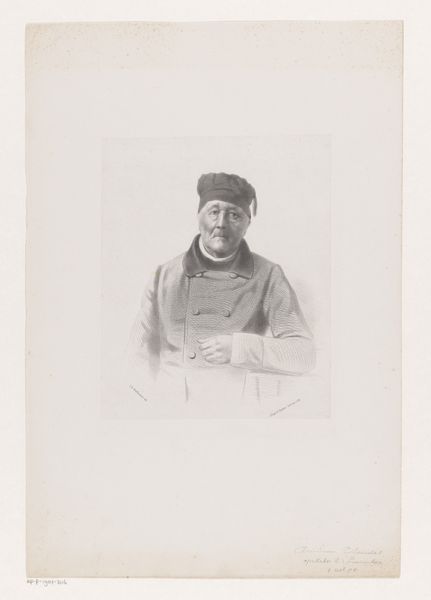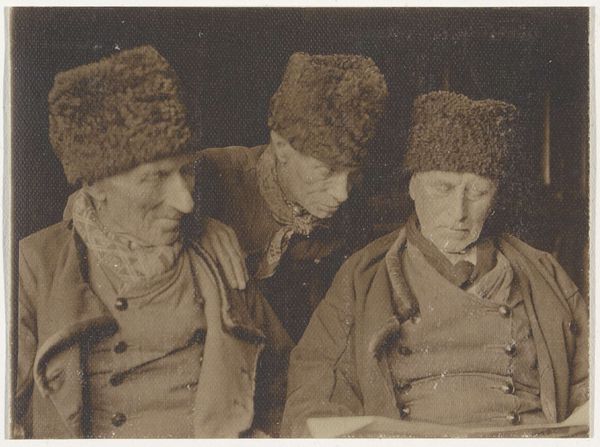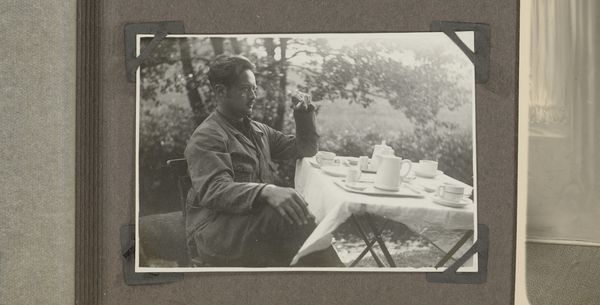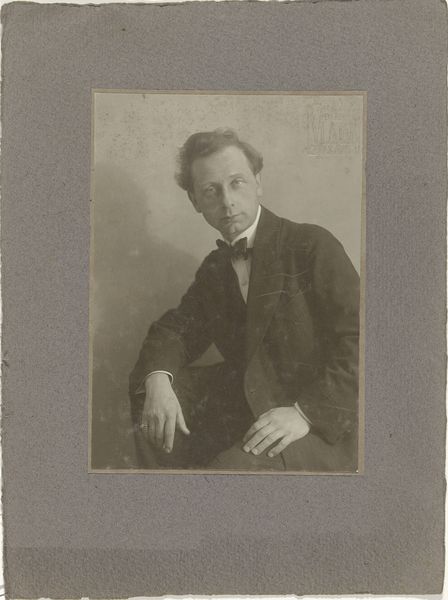
Portret van een man in Volendamse klederdracht, zittend aan een tafel c. 1900 - 1910
0:00
0:00
print, photography
#
portrait
#
print photography
#
still-life-photography
#
dutch-golden-age
# print
#
photography
#
historical photography
#
genre-painting
#
realism
Dimensions: height 85 mm, width 68 mm
Copyright: Rijks Museum: Open Domain
Curator: Oh, my first impression? It feels like a hushed room, a moment captured in amber. This old photograph emanates quiet industry and the textures of a life deeply lived. Editor: Indeed. What we have here is an evocative print, likely a photograph, entitled "Portret van een man in Volendamse klederdracht, zittend aan een tafel," which translates to "Portrait of a Man in Volendam Costume, Sitting at a Table." It's estimated to date from around 1900 to 1910. It's credited to G. Hidderley. The photograph presents an intriguing example of early 20th-century portraiture that engaged with images of regional folk culture. Curator: Absolutely. He looks so focused, writing or perhaps drawing. See the heavy brow, the weight of the pen in his hand. The whole scene, lit just so, brings to mind those intimate domestic scenes painted during the Dutch Golden Age. A quiet story, carefully composed. I can almost smell the tobacco. Editor: Right. Photographers, not unlike genre painters centuries before, recognized the market appeal of romanticized depictions of rural life, like the now-iconic clothing. This portrait performs Volendam identity as both a quaint local reality and as a deliberately picturesque public image that could circulate via print. Curator: Do you think he posed willingly? There's a naturalness about him, almost as if he were unaware. That fur cap perched jauntily upon his head tells the story. Editor: Well, photography, especially at the turn of the century, was a fairly cumbersome process. And, the clothing itself would suggest the performance of local identity was not simply an authentic representation but staged as an element of both commercial and cultural interest in preserving visual signs and cultural artifacts. The image would have been a document and also, perhaps, a fiction. Curator: Fiction, perhaps, but a beautiful fiction! There’s a reverence there, an appreciation of tradition. It’s a world that was already fading then, a world we long for, even if it never truly existed. Editor: Ultimately, the photograph serves as a reminder that representation is always a negotiation between authenticity and construction. Curator: Agreed. What stories these photographs could tell if they could only speak. Editor: Indeed, a poignant reminder to reflect on whose stories get told, and how.
Comments
No comments
Be the first to comment and join the conversation on the ultimate creative platform.
